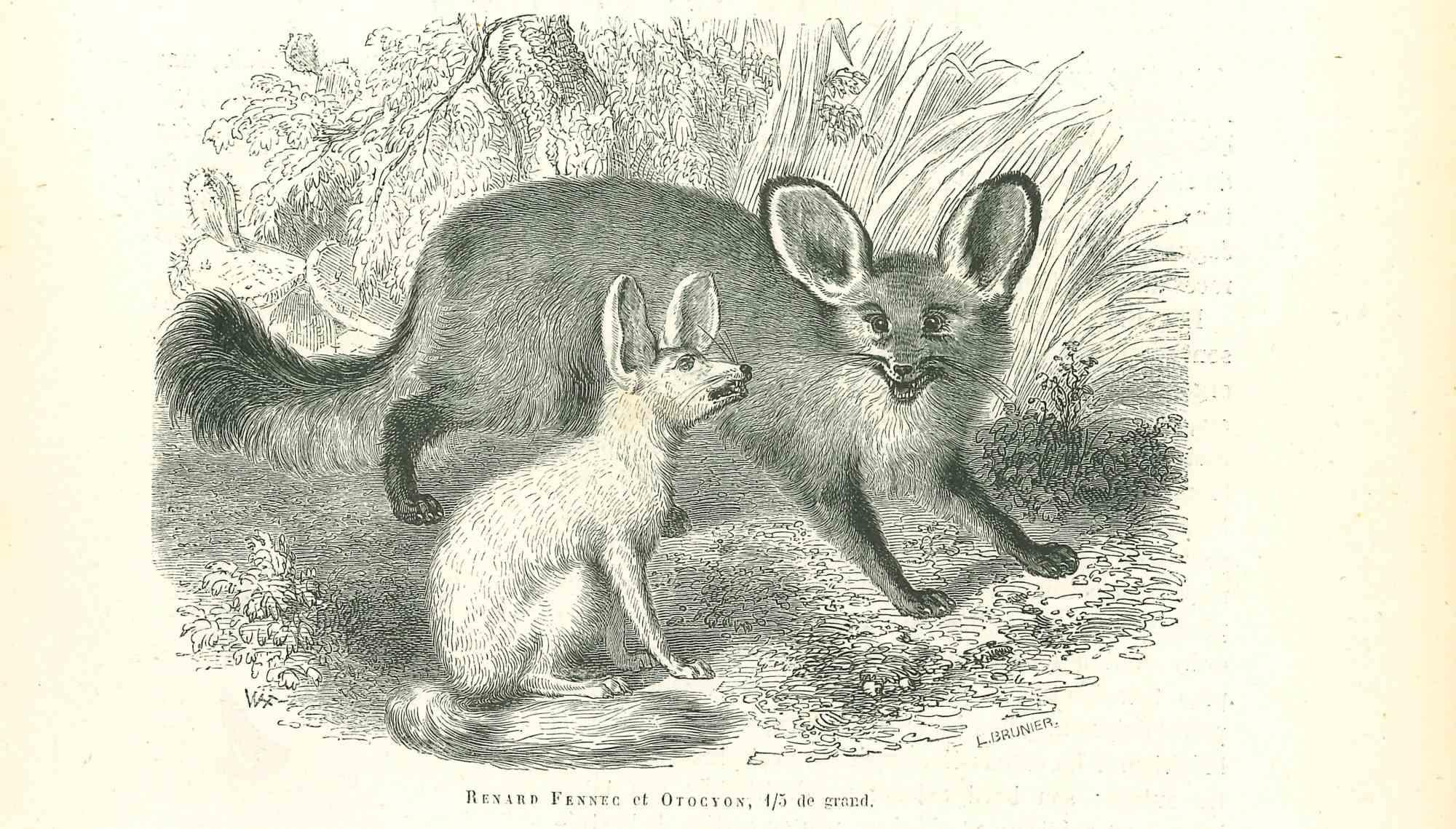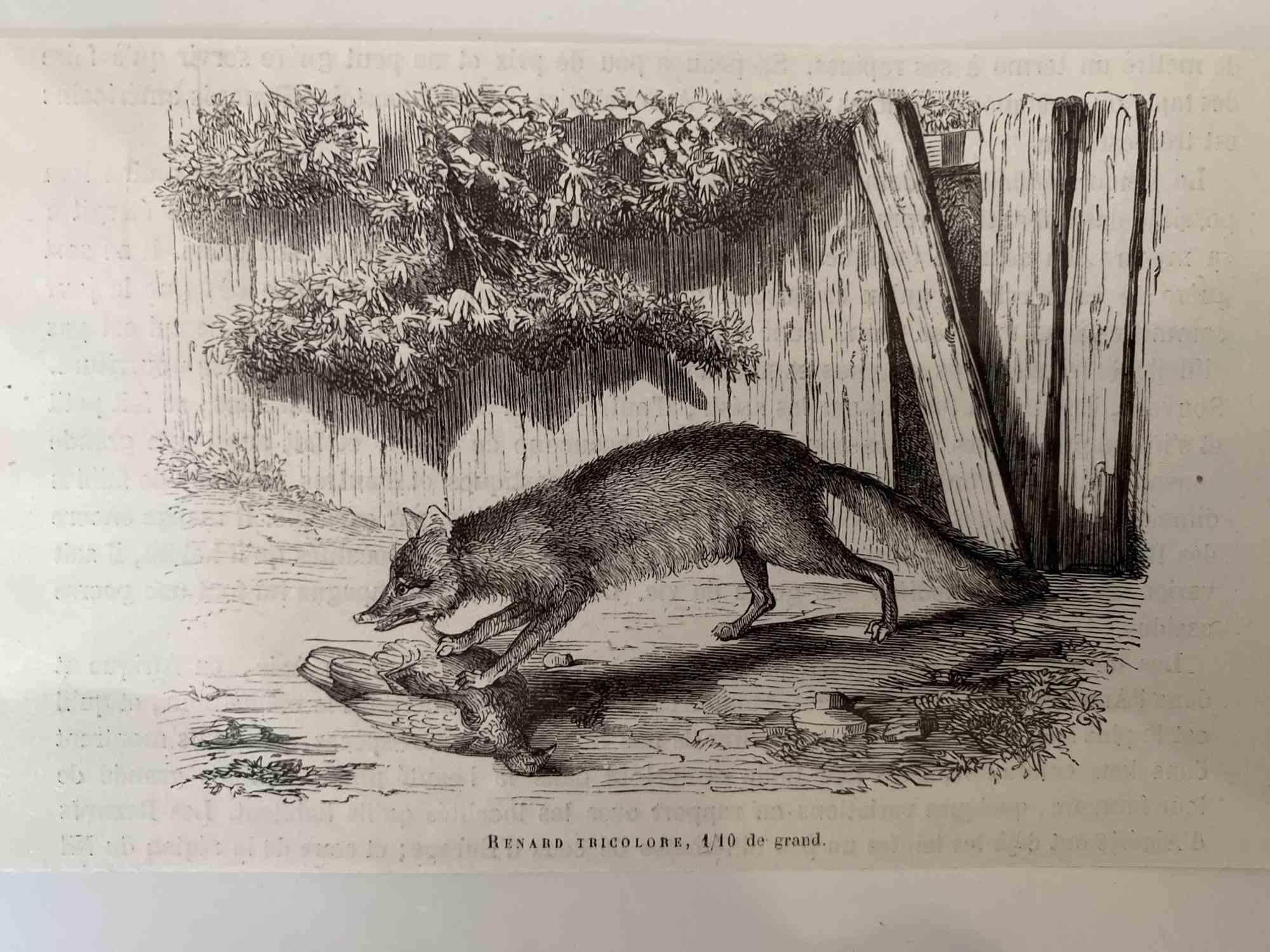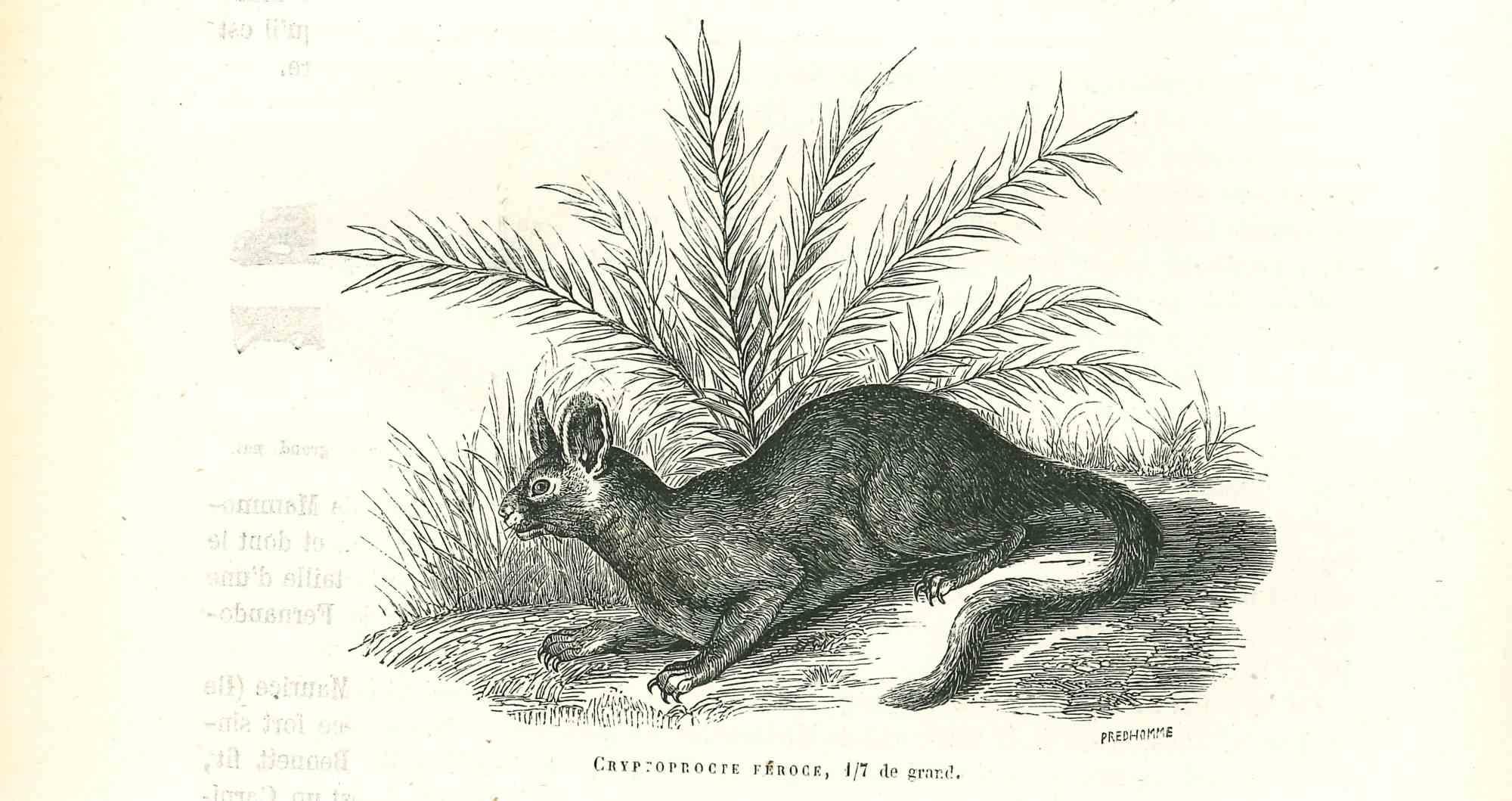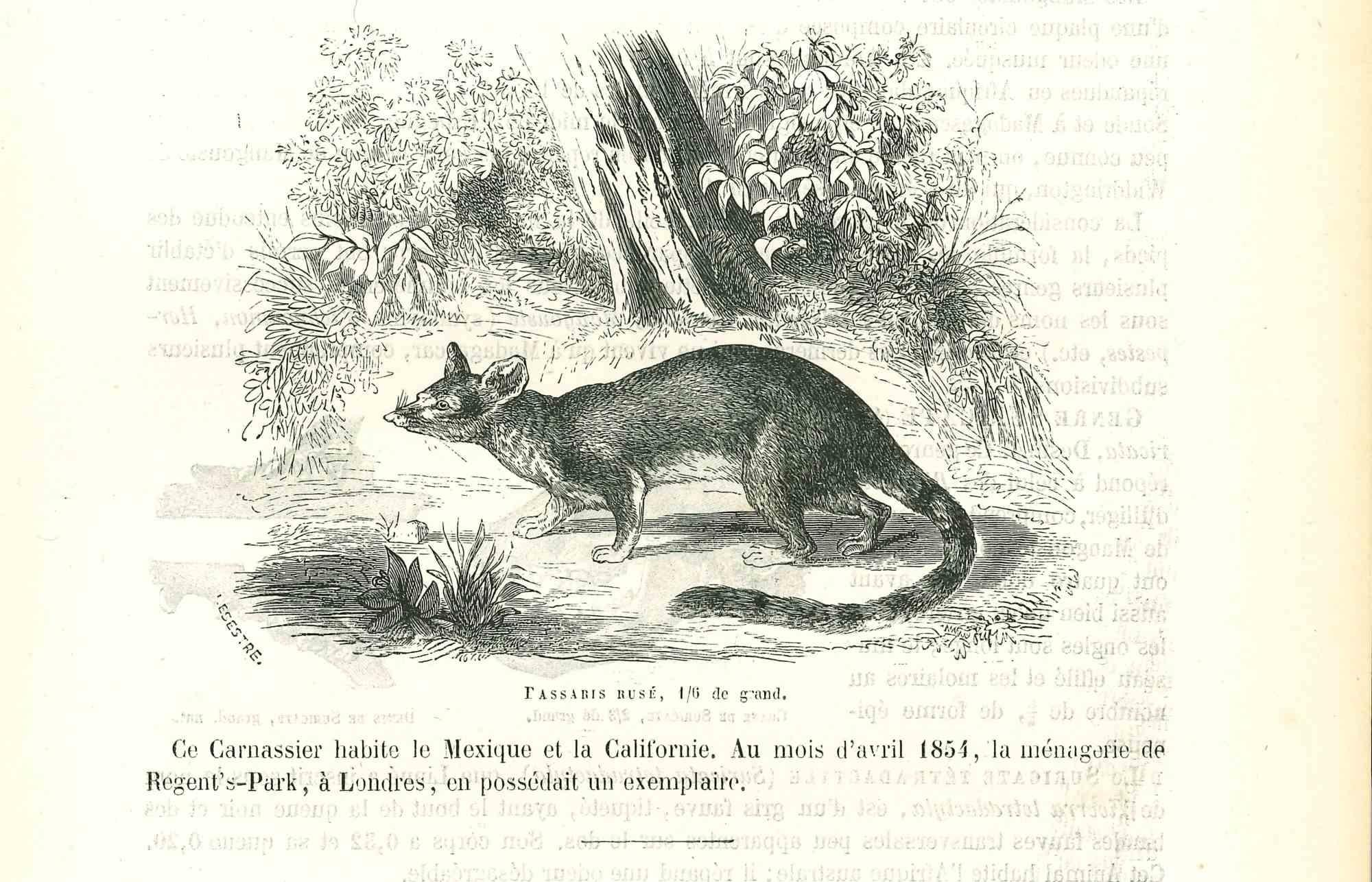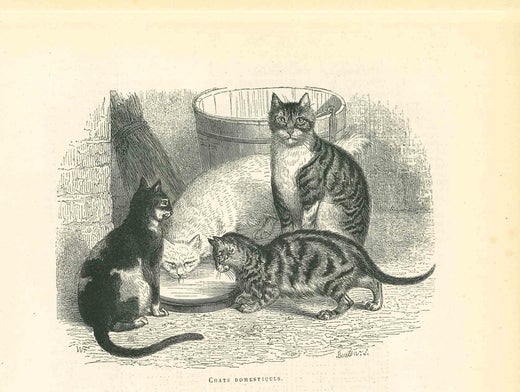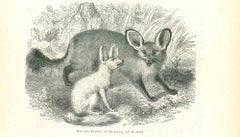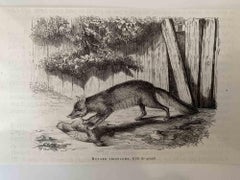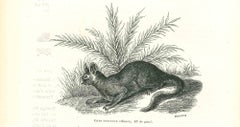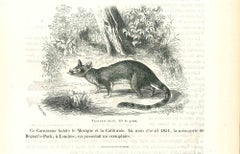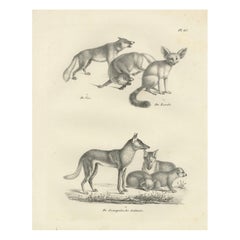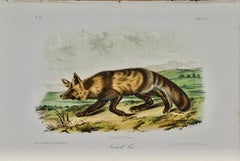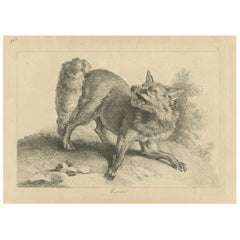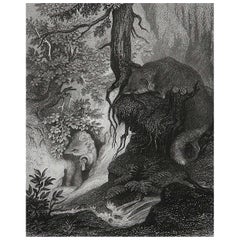Items Similar to Renard Fennec - Lithograph by Paul Gervais - 1854
Want more images or videos?
Request additional images or videos from the seller
1 of 2
Paul GervaisRenard Fennec - Lithograph by Paul Gervais - 18541854
1854
$274.96
£205.21
€230
CA$379.29
A$414.88
CHF 218.45
MX$4,953.26
NOK 2,784.13
SEK 2,546.82
DKK 1,752.22
About the Item
Renard Fennec is a lithograph on ivory-colored paper, realized by Paul Gervais (1816-1879). The artwork is from The Series of "Les Trois Règnes de la Nature", and was published in 1854.
Good conditions.
Titled on the lower. With the notes on the rear.
The series of artworks of "Les Trois Règnes de la Nature" represent animals through deft strokes and precise anatomical studies, which include its movement, behavior, shape, and structures of the body expressed at the same time aesthetically creatively and scientific too, usually with a beautiful landscape in the perspective or in the picturesque scenery.
Paul Gervais (Paris, 26 September 1816 - 10 February 1879) was a French zoologist and paleontologist, obtained a doctorate in science and medicine, obtained a doctorate in science and medicine from 1841 he opened the Department of Zoology and Anatomy compared to the Faculty of Science of Montpellier, where he presided over in 1856. Between 1848 and 1852 he received his important opera French Zoology and Paleontology.
- Creator:Paul Gervais (French)
- Creation Year:1854
- Dimensions:Height: 4.14 in (10.5 cm)Width: 7.09 in (18 cm)Depth: 0.04 in (1 mm)
- Medium:
- Movement & Style:
- Period:
- Framing:Framing Options Available
- Condition:Insurance may be requested by customers as additional service, contact us for more information.
- Gallery Location:Roma, IT
- Reference Number:Seller: T-1268561stDibs: LU650311366912
Paul Gervais
Paul Gervais (Paris, 26 September 1816 - 10 February 1879)
About the Seller
4.9
Platinum Seller
Premium sellers with a 4.7+ rating and 24-hour response times
1stDibs seller since 2017
7,871 sales on 1stDibs
Typical response time: 1 hour
- ShippingRetrieving quote...Shipping from: Monaco, Monaco
- Return Policy
More From This Seller
View AllRenard Fennec - Original Lithograph by Paul Gervais - 1854
By Paul Gervais
Located in Roma, IT
Renard Fennec is an original lithograph on ivory-colored paper, realized by Paul Gervais (1816-1879). The artwork is from The Series of "Les Trois Règnes de la Nature", and was publi...
Category
1850s Modern Figurative Prints
Materials
Lithograph
The Hunting Fox - Lithograph by Paul Gervais - 1854
By Paul Gervais
Located in Roma, IT
The Hunting Fox is an original lithograph on ivory-colored paper, realized by Paul Gervais (1816-1879). The artwork is from The Series of "Les Trois Règn...
Category
1850s Modern Animal Prints
Materials
Paper, Lithograph
The Rabbit - Lithograph by Paul Gervais - 1854
By Paul Gervais
Located in Roma, IT
The Rabbit is a lithograph on ivory-colored paper, realized by Paul Gervais (1816-1879). The artwork is from The Series of "Les Trois Règnes de la Nature", and was published in 1854....
Category
1850s Modern Figurative Prints
Materials
Lithograph
The Mouse - Lithograph by Paul Gervais - 1854
By Paul Gervais
Located in Roma, IT
The Mouse is a lithograph on ivory-colored paper, realized by Paul Gervais (1816-1879). The artwork is from The Series of "Les Trois Règnes de la Nature", and was published in 1854.
...
Category
1850s Modern Figurative Prints
Materials
Lithograph
The Rabbit - Original Lithograph by Paul Gervais - 1854
By Paul Gervais
Located in Roma, IT
The Rabbit is an original lithograph on ivory-colored paper, realized by Paul Gervais (1816-1879). The artwork is from The Series of "Les Trois Règnes de la Nature", and was publishe...
Category
1850s Modern Figurative Prints
Materials
Lithograph
The Mouse - Original Lithograph by Paul Gervais - 1854
By Paul Gervais
Located in Roma, IT
The Mouse is an original lithograph on ivory-colored paper, realized by Paul Gervais (1816-1879). The artwork is from The Series of "Les Trois Règnes de la Nature", and was published...
Category
1850s Modern Figurative Prints
Materials
Lithograph
You May Also Like
19th-Century Lithograph of Foxes, Fennec Fox, and Senegal Jackal in the Wild
Located in Langweer, NL
19th-Century Lithograph of Foxes, Fennec Fox, and Senegal Jackal in the Wild
Description:This fascinating 19th-century lithograph features three distinct canid species: the red fo...
Category
Antique 1830s Prints
Materials
Paper
Jackall Fox: An Original 19th C. Hand-colored Lithograph by John J. Audubon
By John James Audubon
Located in Alamo, CA
This is an original 19th century John James Audubon hand colored lithograph entitled "Jackall Fox", No. 31, Plate CLI, 151, from Audubon's "Quadrupeds of North America", printed and ...
Category
Mid-19th Century Naturalistic Animal Prints
Materials
Lithograph
Renard, The Red Fox: An Original Detailed Etching - circa 1740
Located in Langweer, NL
This etching and engraving, titled "Renard," depicts a fox in a dynamic and alert posture. The artwork captures the fox's thick fur, bushy tail, and sharp features with exquisite det...
Category
Antique 1740s French Prints
Materials
Paper
$420 Sale Price
20% Off
Original Antique Print After H. Leutemann, Reynard the Fox's Treasure
Located in St Annes, Lancashire
Great image by Heinrich Leutemann
From the Reynard The Fox series
Fine steel engraving
Published by A.H. Payne C.1850
Unframed.
Category
Antique 1850s English Black Forest Prints
Materials
Paper
Original Antique Print of Foxes, 1854
Located in Langweer, NL
Antique print titled 'Renards'. Print of foxes. This print originates from 'Musée d'Histoire Naturelle' by M. Achille Comte.
Artists and Engravers: Published by Gustave Havard.
...
Category
Antique 19th Century Prints
Materials
Paper
$133 Sale Price
20% Off
Vigilant Fox - The psyche of the fox -
Located in Berlin, DE
Carl Friedrich Deiker (1838 Wetzlar - 1892 Düsseldorf). Vigilant fox. Pencil drawing on brown paper, 18 × 29.5 cm (inside measurement), 31.5 x 43.5 cm (mount), signed and dated "Deiker [18]54" at lower right.
- a little bit stained, with a light water stain at lower right
About the artwork
Carl Friedrich Deiker's consummate ability to depict animals is already evident in this early work. He brought a whole new psychological dimension to animal painting, so that one could literally speak of animal portraits.
The naturalistic appearance of the fox alone makes it seem alive. Every strand of muscle, even every hair, is captured, which requires an intensive artistic study of animal anatomy and physiology. But the fox's real liveliness comes not from its natural appearance, but from its internal movement: Stretched out, it has been brought out of rest. It turns around and, with its ears pricked up, looks intently in the direction from which it has seen something. His mouth is slightly open and his pointed teeth are bared, as if he were growling. Tension gradually takes hold of his whole body. While the hind legs were still in a relaxed position, closely observed by Deiker, one front leg was already raised, ready to begin a rising movement. The fox seems so alarmed with all its senses that one gets the impression that, at any moment, its tail will move jerkily and the animal will jump up.
While wild animals have traditionally been portrayed as beasts or anthropomorphised, often for caricatural purposes, Deiker explores their inherent nature by attempting to capture their psychic impulses. The wild animal is neither bestial nor human, but a creature in its own right, valued by Deiker for its own sake. In this way, he brought the dignity of the animal into representation and raised animal painting to a whole new artistic level.
About the artist
Carl Friedrich Deiker was the son of the drawing teacher Christian Friedrich Deiker and the younger brother of the animal painter Johannes Deiker. In addition to the family art lessons, Christian Friedrich shared a studio with his brother Johannes at Braunfels Castle, Deiker attended the drawing academy in Hanau, and from 1858 he was a student at the Karlsruhe Art Academy, where he studied under the landscape painter Johann Wilhelm Schirmer. Carl Friedrich Deiker was already in demand as an artist during his first year: Grand Duke Frederick I of Baden, Margrave Max of Baden and Grand Duke Michael of Russia bought hunting scenes by him.
In 1859 he went on a study trip to the Reinhardswald. Just as the Barbizon School had rediscovered the landscape, Deiker opened up the forest for animal painting.
From 1861-64 Deiker had his own studio in Karlsruhe, then moved to Düsseldorf, where his brother Johannes followed four years later. Deiker married a daughter of the landscape painter Karl Hilger and remained in Düsseldorf until his death.
In 1868 he finally achieved international fame with his painting 'Pursued Noble Deer' and was regarded as a virtuoso new founder of animal painting.
"Deiker brought for the first time a truly great artistic quality to animal painting [...]".
- Hans Vollmer
From 1870 he participated in the academic art exhibitions in Berlin, Dresden, Munich and Hanover. He was also very busy as an illustrator. He drew for the Gartenlaube, the Salon, the Universum, and produced many of the finely illustrated hunting and animal books of the period. He also worked as a printmaker, while his oil paintings circulated as reprints by Franz Dinger.
From 1865 to 1892 Deiker was a member of the artists' association Malkasten.
Carl Friedrich Deiker's life's work was honoured with a large posthumous memorial exhibition at the Düsseldorf Kunsthalle in 1892.
His son Carl Deiker, born in 1879, also became a painter.
Selection of art museums that own works by Carl Friedrich Deiker:
Hamburger Kunsthalle / Kunsthalle Karlsruhe / Kunstmuseum Düsseldorf / Wallraff Richartz Cologne.
Selected Bibliography
H. Schmidt: Johannes and...
Category
1850s Naturalistic Animal Drawings and Watercolors
Materials
Pencil
More Ways To Browse
Dali Beatrice
Daumier Les Gens De Justice
De La Fille
Elizabeth Ii Signed
Erotica Prints
Guerin Prints
Japanese Beauties Prints
John Hay Whitney
Joseph And His Brothers
Kaws Pink Companion
Keith Haring Bill T Jones
Laura Owens
Le Couple
Leonard Baskin Woodcut
Les Bijoux Vintage
Linocut Africa
Lithograph Jesus
Lois Jones
